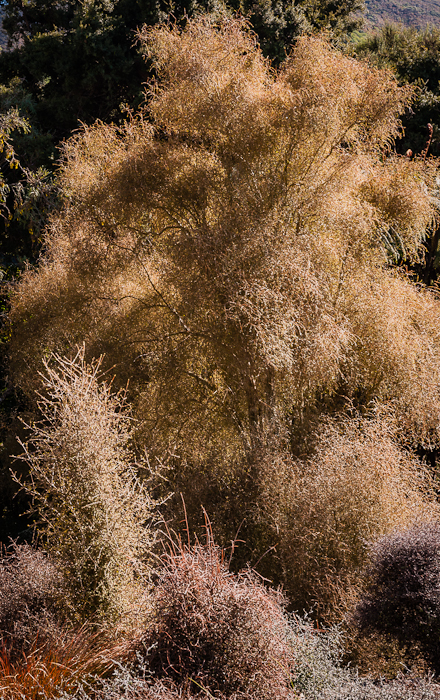The native plants of New Zealand are a pretty interesting bunch. Quite a few show divarication, a growth habit where the stems branch frequently and at wide angles. This makes a kind of spreading zig-zag pattern with the stems multiplying and spreading into a big intertwined tangle - like the Muehlenbeckia astonii which I have already pictured and described. The plants with this structure typically also have very small leaves which tend to grow within the tangle, so that the twiggy branches have a protective effect. Divarication is quite a common feature, found not just in shrubs but also in juvenile forms of trees which start off as shrubby divaricating forms that then mature into a recognisable tree form.

Above - a golden Coprosma virescens side-lit by the morning sun, showing the foaming tangle of twiggy stems and surrounded by smaller divaricating shrubs in shades of reddish brown - in a section of Otari Wilton's Bush.
A rather appealing theory as to why this form developed was that it protected foliage from browsing by the now-extinct moa - a very large flightless bird even bigger than an emu or ostrich. However, a more prosaic explanation for the development of this pattern of growth in a number of different species is that this structure protected the plant, and leaves especially, from adverse weather conditions - wind, desiccation, and so on.
Being a Wellingtonian, I tend to imagine that the weather is more dreadful to plants than a big bird would be! But that is because Wellington is renowned for its wind, and we are beginning to get the spring gales...
Whatever the reasons for divarication to have become a feature, I think there is beauty in the oddness of this form. A closer view shows in more detail the golden branches and the tiny green leaves in a lacy tangle.

A plant of Coprosma virescens, side-lit, showing the lacy intertwining tangle of divarication.